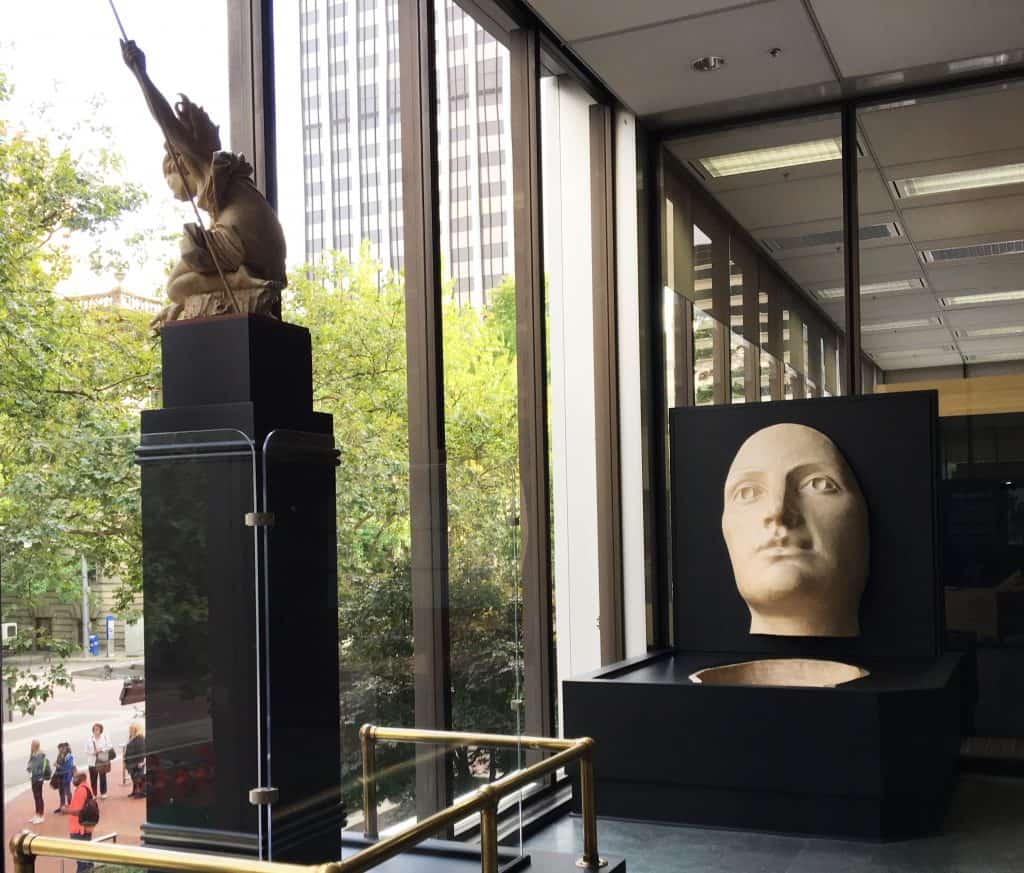Regional Arts & Culture Council and Open Signal to host projections from local artists
PORTLAND, ORE — Night Lights, a monthly public art event, continues into its third year of urban intervention. A special launch party will be held at Open Signal on Wednesday, September 20 before the First Thursday series begins on October 5, showcasing projections of digital media from local artists and art students. Open Signal and the north wall of the Regional Arts & Culture Council (RACC) offices will serve as the sites for this year’s events, with artists presenting works tailored specifically for those locations.
Night Lights represents an ongoing relationship between RACC’s public art program and Open Signal, celebrating the crossroads of local talent and technological innovation. The series illustrates the organizations’ inventive spirits, featuring presentations that include large-format projections, and interactive performances. Finalists were chosen through an open call and a community panel process, receiving a stipend for their participation.
The full Night Lights schedule is listed below, showcasing a different work each month. Emcee and performance artist Pepper Pepper inaugurates this year’s events on October 5, debuting an immersive project that will transform its audience into a kaleidoscopic collage.
This year, artists-in-residence Amy Chiao & Chloe Cooper will have full access to Open Signal’s resources for four months, developing a new work about their experiences parading a fifteen foot puppet through public and private settings. The documentary will premier on April 5, 2018 at Open Signal’s parking lot, and attendees will also have the opportunity to interact with the puppet used for filming.
Night Lights schedule
Wednesday, September 20, 2017
Launch Party
Open Signal
2766 NE Martin Luther King Jr Blvd, Portland
7:00pm-9:30pm
Free RSVP
Thursday, October 5, 2017
Pepper Pepper
Regional Arts & Culture Council, exterior north wall
411 NW Park Avenue @ Glisan Street, Portland
Begins After Dusk, Lasts 2 Hours
Thursday, November 2, 2017
Stephanie Mendoza
Regional Arts & Culture Council, exterior north wall
411 NW Park Avenue @ Glisan Street, Portland
Begins After Dusk, Lasts 2 Hours
Wednesday November 29, 2017
PSU Presentation with Professor Dave Colangelo
Regional Arts & Culture Council, exterior north wall
411 NW Park Avenue @ Glisan Street, Portland
Begins After Dusk, Lasts 2 Hours
Thursday, December 7, 2017
Ezekiel Brown
Regional Arts & Culture Council, exterior north wall
411 NW Park Avenue @ Glisan Street, Portland
Begins After Dusk, Lasts 2 Hours
Thursday, February 1, 2018
Julia Calabrese
Regional Arts & Culture Council, exterior north wall
411 NW Park Avenue @ Glisan Street, Portland
Begins After Dusk, Lasts 2 Hours
Thursday, March 1, 2018
Portland State University Showcase
Regional Arts & Culture Council, exterior north wall
411 NW Park Avenue @ Glisan Street, Portland
Begins After Dusk, Lasts 2 Hours
Thursday, April 5, 2018
Amy Chiao & Chloe Cooper (Artists in Residence)
Open Signal
2766 NE Martin Luther King Jr Blvd, Portland
Begins After Dusk, Lasts 2 Hours
Learn more about Night Lights at nightlightspdx.tumblr.com
About Open Signal
Open Signal is a media arts center making media production possible for anyone and everyone in Portland, Oregon. Launched in 2017, the center builds upon the 35-year legacy of Portland Community Media to create a resource totally unique in the Pacific Northwest. Open Signal offers media workshops, an equipment library, artist residencies and programs five cable channels with locally produced content. Open Signal delivers media programming with a commitment to creativity, technology and social change. Learn more at opensignalpdx.org
About Regional Arts & Culture Council
The Regional Arts & Culture Council (RACC) provides grants for artists, nonprofit organizations and schools in Clackamas, Multnomah and Washington Counties; manages an internationally acclaimed public art program; raises money and awareness for the arts through Work for Art; convenes forums, networking events and other community gatherings; provides workshops and other forms of technical assistance for artists; and oversees a program to integrate arts and culture into the standard curriculum in public schools through The Right Brain Initiative. RACC values a diversity of artistic and cultural experiences and is working to build a community in which everyone can participate in culture, creativity and the arts. Learn more at racc.org.




